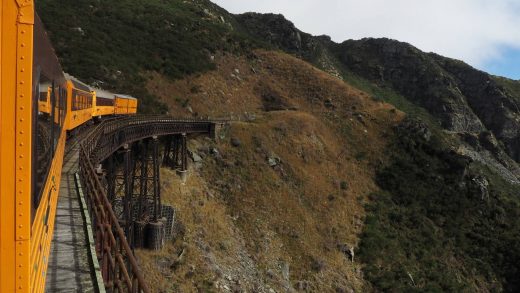
Five people killed in a Kaikōura boating accident – which may have been caused when the vessel struck a whale – were trapped beneath the hull while petrol leaked around them, “very likely” reducing their chance of survival.
Peter Hockley, 76, Susan Cade, 63, Cathye Haddock, 65, Diana Stewart, 68 and Maureen Pierres, 75, died while on a Nature Photography Society of New Zealand expedition to photograph seabirds off Goose Bay on September 10 2022.
Four other members of the group and skipper Mark Ealam were also aboard the i-Catcher – a chartered Fish Kaikōura boat – when it rapidly capsized, two hours into a three-hour journey, at around 10.05am.
Evidence reviewed by the Transport Accident Investigation Commission’s (TAIC) medical consultant identified the five who died showed “symptoms of petrol exposure, consistent with inhalation and absorption of petrol fumes”.
TAIC/Supplied
The Fish Kaikōura boat that capsized on September 10, 2022.
The TAIC released its preliminary investigation findings into the tragedy on Thursday and called for Maritime New Zealand (MNZ) to urgently address a potentially lethal, safety issue with commercial boat fuel systems.
The report stated initial inquiries suggested a whale had caused the boat to capsize, but it did not confirm if that had been proven.
According to the investigation, two passengers were ejected from the 8m aluminium pontoon boat when it capsized, leaving eight passengers and Ealam underneath the upturned boat.
CHRIS SKELTON/Stuff
A rescue boat and the Coastguard at the site where the i-Catcher capsized.
Ealam and two passengers immediately swam out from underneath the vessel. The TAIC report describes five passengers as “trapped beneath the hull”, but does not explain why.
A female passenger then surfaced within the air pocket and attempted to instruct the five others to swim out.
CHRIS SKELTON
Five people died and six were rescued after a boat they were on capsized on Saturday September 10 2022, at Goose Bay, near to Kaikōura in North Canterbury.
“The passenger then sensed that ‘the air did not feel good’ and swam out from under the vessel,” said the report.
Afterwards, the female passenger smelt petrol on their jacket but not on their pants, which was consistent with the presence of petrol on the surface of the water within the cockpit area of the upturned vessel, according to the TAIC’s findings.
TAIC/Supplied
A hole in an alloy vent tube was evident on investigation, causing fuel to leak when the boat upturned.
All five trapped passengers died and were retrieved by the Police National Dive Squad, who also reported “very strong fumes” within the air pocket.
Five female passengers who had climbed onto the upturned hull were rescued by 10.43am. Ealam chose to stay on the upturned vessel but was later retrieved by Coastguard Kaikōura.
The Commission found flaws in the vessel’s fuel system, including a 12mm by 6mm hole in an alloy vent tube attached to a secondary vent hose, which almost certainly allowed fuel to leak into the air pocket of the upturned vessel and “very likely” reduced the survivability of the accident for the five victims.
Supplied
Cathye Haddock enjoyed outdoor adventures.
“The presence of petrol in a confined space reduces survivability, as petrol attacks the cardiac and central nervous systems,” the report said.
High exposure to petrol fumes can rapidly lead to confusion, loss of consciousness and sudden death, in concluded.
The i-Catcher had been regularly inspected under MNZ rules including an initial survey prior to it entering commercial service in 2009. Surveys were conducted approximately every two years.
Supplied/Family
Diana Stewart was one of the victims of the tragedy.
However, no inspection of the fuel system below the deck plate had been conducted on the vessel as part of its commercial service.
“Similarly, survey reports hadn’t identified the secondary fuel tank vent was ineffective.”
The initial TAIC investigation did not determine how long the hole had been in the alloy tube.
Failures in fuel systems can have serious consequences including fire, explosion, inhalation of toxic fumes and environmental harm, the report states.
Supplied
Peter Hockley was one of five photographers who died.
Accordingly, TAIC recommended MNZ use an appropriate mechanism that ensured the integrity and safety of fuel systems were being maintained and monitored through the survey system.
The Commission also recommended MNZ alert all recognised surveyors to the importance of conducting and documenting inspections of a vessel’s complete fuel system during surveys.
MNZ and the Coroners’ office have yet to release their findings on the tragedy.
Skipper Mark Ealam’s wife, Sharlene, declined to comment until all investigations were concluded.
She confirmed they had sold the business after the tragedy as her husband “couldn’t carry on”.
Supplied
Susan Cade loved the outdoors.


